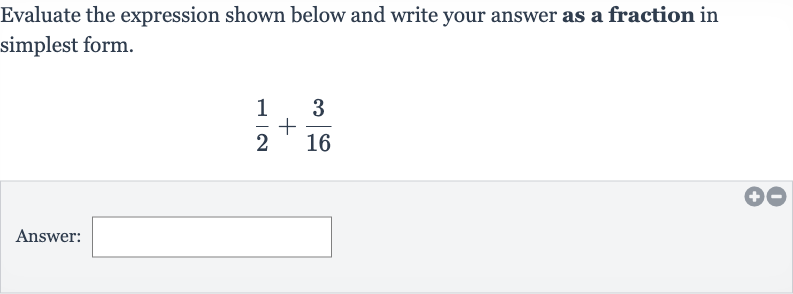AI tutor
Welcome to Bytelearn!
Let’s check out your problem:

Evaluate the expression shown below and write your answer as a fraction in simplest form.Answer:
Full solution
Q. Evaluate the expression shown below and write your answer as a fraction in simplest form.Answer:
- Identify Common Denominator: Identify a common denominator for the fractions and . Since is a multiple of , we can use as the common denominator.
- Convert to Common Denominator: Convert the fraction to have the common denominator of . To do this, multiply both the numerator and the denominator by .
- Add Fractions: Add the converted fraction to the fraction .
- Perform Addition: Perform the addition in the numerator.
- Check for Simplification: Check if the resulting fraction can be simplified.Since is a prime number and does not share any common factors with other than , the fraction is already in its simplest form.
